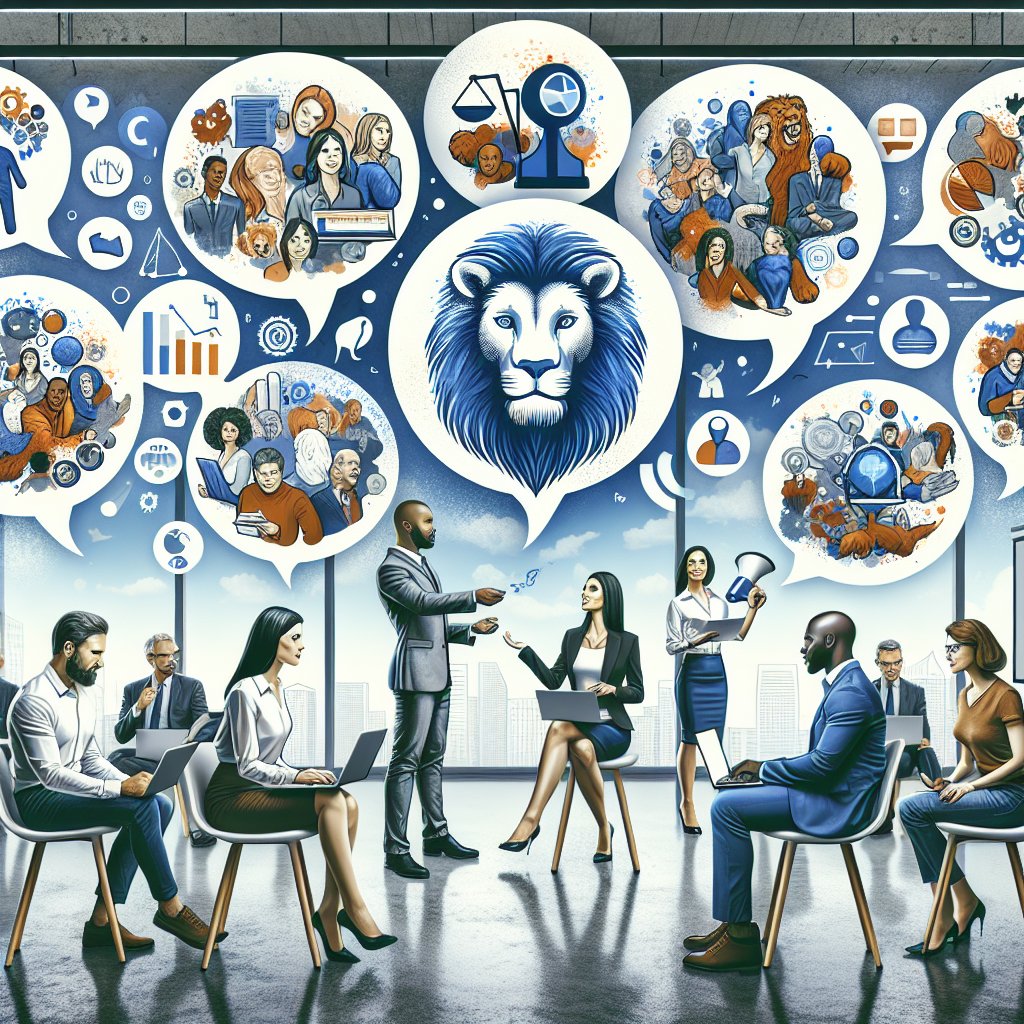Personality traits play a significant role in shaping workplace dynamics in occupational Psychology. It is important for organizations to understand how different personalities interact in order to create a productive and harmonious work environment. In this article, we will explore the ways in which personality traits influence workplace dynamics and how they can impact an individual’s success in the workplace.
Personality traits are the characteristics that define an individual’s behavior, emotions, and thoughts. They are often categorized into five main dimensions known as the Big Five personality traits: openness, conscientiousness, extraversion, agreeableness, and neuroticism. Each of these traits can have a significant impact on an individual’s behavior and interactions with others in the workplace.
Openness is a personality trait that refers to an individual’s willingness to try new things and explore new ideas. People who are high in openness tend to be creative, imaginative, and open-minded. They are often willing to take risks and think outside the box, which can lead to innovative solutions in the workplace. However, those who are low in openness may be resistant to change and prefer to stick to traditional methods, which can hinder progress and innovation.
Conscientiousness is a personality trait that relates to an individual’s level of organization, responsibility, and work ethic. People who are high in conscientiousness tend to be reliable, hardworking, and detail-oriented. They are often committed to their work and strive for excellence in everything they do. On the other hand, individuals who are low in conscientiousness may struggle to meet deadlines, be disorganized, and lack motivation, which can impact their performance in the workplace.
Extraversion is a personality trait that refers to an individual’s sociability, assertiveness, and energy level. People who are high in extraversion tend to be outgoing, sociable, and confident. They thrive in social settings and enjoy working in teams. They are often seen as natural leaders and influencers in the workplace. However, those who are introverted may prefer to work independently, be more reserved, and may struggle with assertiveness, which can impact their ability to communicate effectively with others.
Agreeableness is a personality trait that relates to an individual’s level of empathy, cooperation, and friendliness. People who are high in agreeableness tend to be compassionate, considerate, and cooperative. They value harmony and strive to maintain positive relationships with others. They are often seen as team players and peacemakers in the workplace. However, individuals who are low in agreeableness may be more competitive, critical, and conflict-prone, which can lead to tension and discord in the workplace.
Neuroticism is a personality trait that refers to an individual’s emotional stability and ability to cope with stress. People who are high in neuroticism tend to be anxious, moody, and prone to negative emotions. They may struggle to cope with pressure and adversity in the workplace, which can impact their performance and relationships with others. On the other hand, individuals who are low in neuroticism tend to be calm, resilient, and emotionally stable. They are able to handle stress effectively and maintain a positive attitude, which can help them navigate challenges in the workplace.
Understanding how these personality traits influence workplace dynamics can help organizations create a more cohesive and productive work environment. By recognizing the strengths and weaknesses of individuals with different personality traits, organizations can leverage diversity to drive innovation, creativity, and collaboration in the workplace. For example, a team that includes individuals who are high in openness may be more likely to generate creative ideas and solutions, while a team that includes individuals who are high in conscientiousness may be more likely to meet deadlines and deliver high-quality work.
In addition to shaping workplace dynamics, personality traits can also impact an individual’s success in the workplace. Individuals who are aware of their own strengths and weaknesses can better leverage their personality traits to achieve their professional goals. For example, a person who is high in extraversion may excel in roles that require strong interpersonal skills, such as sales or customer service. On the other hand, a person who is high in conscientiousness may thrive in roles that require attention to detail and organization, such as project management or data analysis.
In conclusion, personality traits play a crucial role in shaping workplace dynamics in occupational psychology. By understanding how different personality traits influence behavior and interactions in the workplace, organizations can create a more cohesive and productive work environment. Individuals who are aware of their own personality traits can leverage them to achieve success in their careers. By recognizing and embracing the diversity of personality traits in the workplace, organizations can harness the unique strengths of each individual to drive innovation, collaboration, and success.
FAQs:
1. How can organizations assess employees’ personality traits in the workplace?
Organizations can use personality assessments such as the Big Five personality test to evaluate employees’ personality traits. These assessments can provide valuable insights into how individual traits may impact behavior and interactions in the workplace.
2. Can personality traits change over time?
While personality traits tend to be relatively stable over time, they can be influenced by life experiences and personal growth. Individuals may develop new skills and behaviors that align with different personality traits as they mature and gain new perspectives.
3. How can individuals leverage their personality traits to succeed in the workplace?
Individuals can leverage their personality traits by identifying their strengths and weaknesses and finding roles that align with their natural tendencies. By understanding how their personality traits influence behavior and interactions, individuals can make informed choices about their career paths and professional development.
4. How can organizations promote diversity and inclusion in the workplace based on personality traits?
Organizations can promote diversity and inclusion by recognizing and valuing the unique strengths of individuals with different personality traits. By creating a culture that embraces diversity of thought and behavior, organizations can foster creativity, innovation, and collaboration in the workplace.




Leave A Comment